The River Ash is a distributary of the River Colne which flows for 10km between Staines and Sunbury. It was once a natural river but has been directly impacted by urbanisation resulting in many of the river’s natural features being lost and the valuable habitat it once offered to wildlife becoming degraded.
The Colne Valley Regional Park has worked with Spelthorne Council, The Environment Agency and Spelthorne Natural History Society to successfully deliver a project to re-naturalise the River Ash adjacent to Bronzefield Prison in Ashford. The project was designed and constructed by Five Rivers, a specialist river restoration contractor, in October 2020
The project has enhanced the river’s habitat over 0.5km for a range of aquatic wildlife, with the site transformed to provide new habitats for fish, amphibians, invertebrates and waterfowl to thrive. The project was completed at the optimum time of the year to minimise disturbance to the breeding seasons of terrestrial and aquatic wildlife in accordance with Environment Agency guidelines. With the Meteorological Office ranking October 2020 as the 5th wettest October on record for the UK, thus unfortunately the high rainfall this October has resulted in some muddy areas on site. However this has been addressed by reseeding all affected areas with grass seed in order to help the site recover as quickly as possible.
In springtime we will be holding a volunteer planting day so everyone can help bring life and colour back to the location. Footpath improvement works are planned this year too to enable a new circular walking route with a boardwalk so no matter how wet the weather you can still enjoy a stroll.
So what did we do and why?
Historically this stretch of river had been artificially realigned, which decreased the rate at which natural morphological processes occur. In other words, the river was unable to change in shape and direction naturally and no longer provided quality habitat for aquatic wildlife to thrive.
To enhance the river’s flow and to replicate natural sinuosity, the team installed a series of berms and flow deflectors in order to provide a range of flow types and water depths. Additionally, the existing rock deflectors on site were repositioned to encourage the scour of the river bed, allowing deeper pools and shallow areas of gravel to form for the benefit of fish spawning, submerged plant life and aquatic invertebrates.
Tree pollarding increasing sunlight for the river. Berm and gravel riffle installation providing a range of flow types and water depths.
Additionally, the River Ash was poorly connected to its natural floodplain which prevented it from expanding naturally at times when water levels rose. To reconnect the river and to restore some of the natural functions of the floodplain, we have installed two backwaters and a series of offline ponds. These wetland features provide fish recruitment habitat, a home for amphibians and an area for kingfishers to feed. They also serve as an important refuge against pollution by providing areas of clean water for wildlife to shelter from disturbance. The features also work to reduce flood risk by offering additional water storage capacity and the ability to slow the flow of water downstream following high rainfall.
Pond and backwater installation, an important recruitment habitat and refuge for wetland species.
Although trees are important for the river ecosystem, too many trees can have a negative effect on freshwater habitats. Over shading caused by dense tree cover leads to a reduction in the diversity of aquatic species, which require good light levels in order to survive. To reduce the impact of over shading, some trees were removed to create a 60:40 ratio of sunlight and shade. Also pollarding (the act of cutting the tree branches back to the central trunk) was carried out, to increase light levels to the river channel. This will allow aquatic plant life to come back and flourish, whilst also creating viewpoints for visitors to the site to enjoy the river.
The wood arising from the treeworks has been repurposed to form hibernacula for amphibians, reptiles and invertebrates. These can be found positioned around the site in areas outside of the flood zone.
Hibernacula creation for the benefit of amphibians, reptiles and invertebrates.
Another issue to tackle was the excessive siltation of the riverbed. This is caused by the reduction in natural morphological processes and flow combined with high levels of organic debris in the watercourse. This has resulted in an absence of clean gravel substrate which is essential habitat for fish spawning and diverse river fly life. Fish and river flies provide an essential food source for birds and bats, so improving the parameters for these species will have a beneficial impact for the wider ecology of the site. To mitigate the effect of siltation, gravel riffles were installed to restore the river’s natural substrate, providing a spawning ground for fish and aquatic invertebrates.
Berm installation restoring natural morphological processes and clean gravel for the benefit of aquatic species.
Historically there was a chain link fence just to the north of the river. The original function of the fence line had gone but it now isolated the river, preventing access for wildlife and resulted in tree damage as they grew. To reconnect the site the double mesh fence line was removed which opened up the light and created space for humans and wildlife species to access and enjoy the river corridor.
As the newly installed features mature over the next year. the river will take a more natural appearance. Excitement awaits to see which new creatures and plants find a home in the re-naturalised river and the other newly created habitats. Come Spring the plants will emerge bringing colour, energy and life back to the River Ash for both wildlife and humans to enjoy.
Historical fence line removal and newly opened footpath
Want to get involved?
We aim to organise a volunteer day next year. If you would like to help out with a hedging or marginal planting volunteer session please email Chloe to register your interest. You will be informed of upcoming dates and activities when details are released.
Contact details: [email protected]
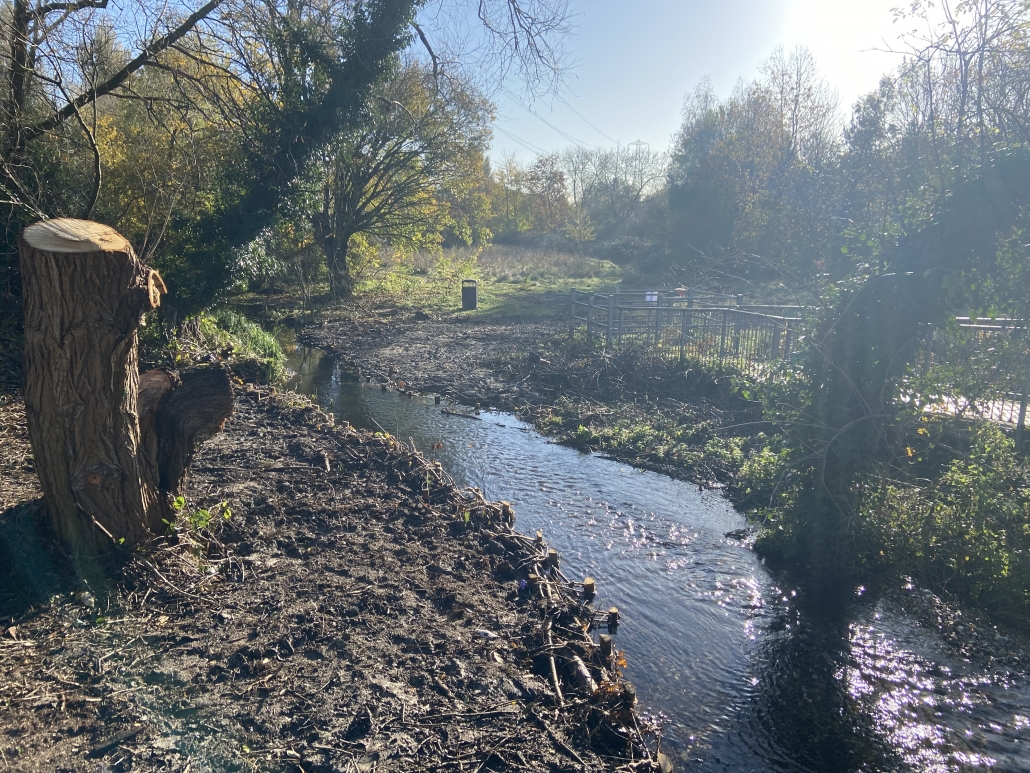
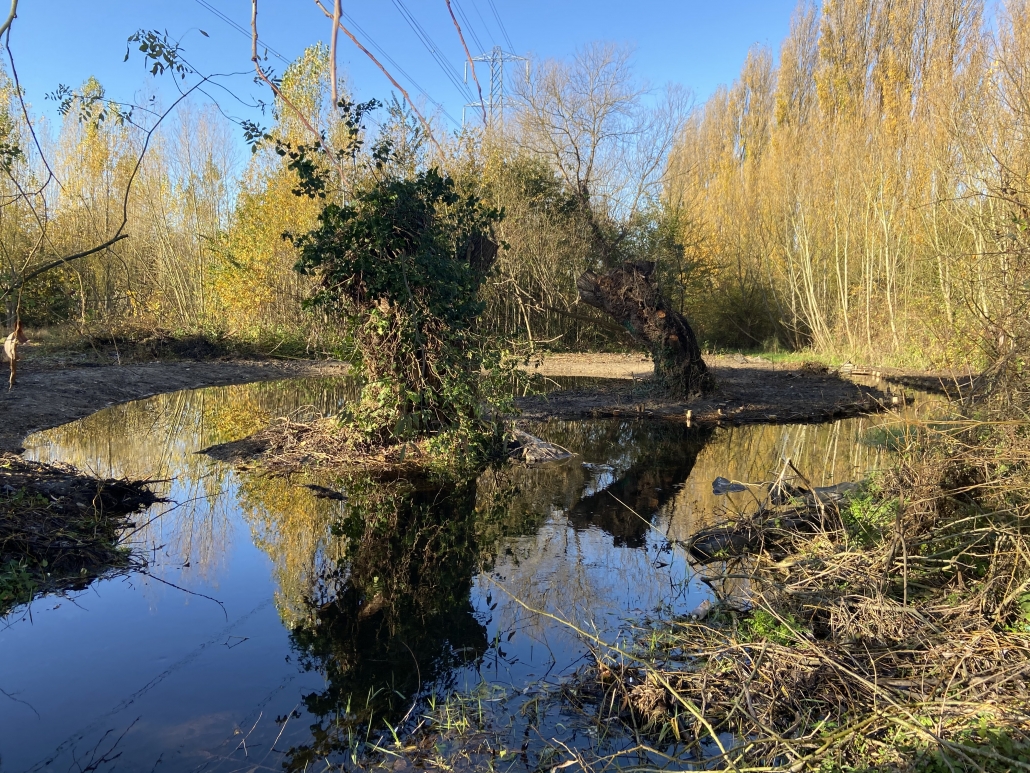
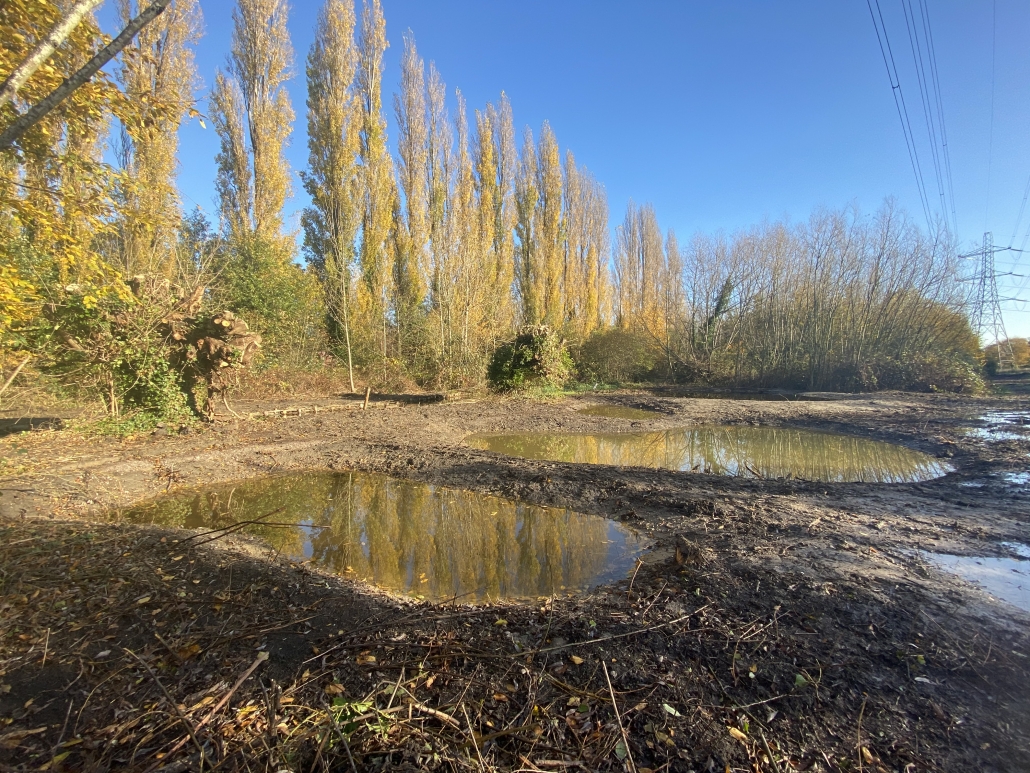
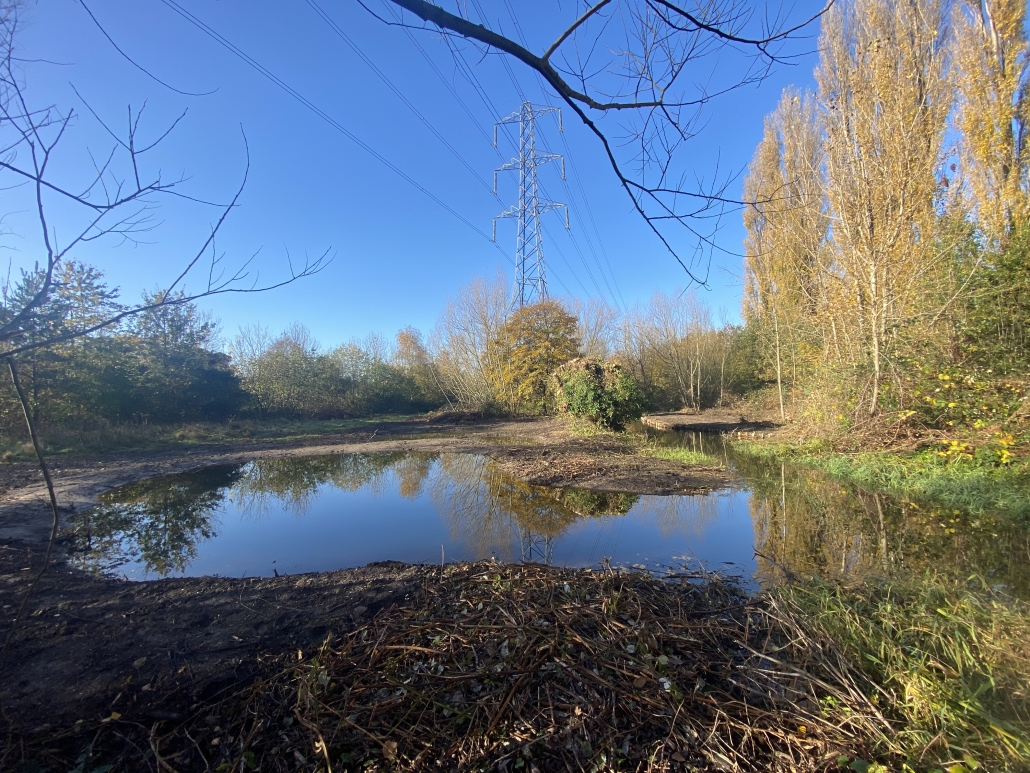
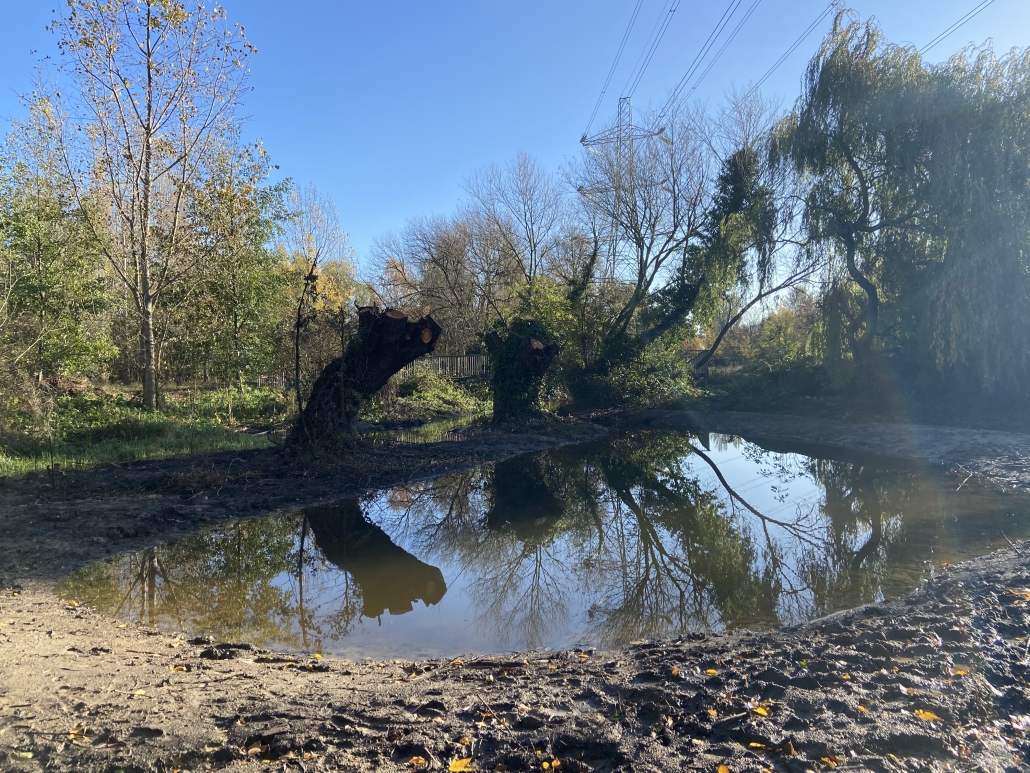
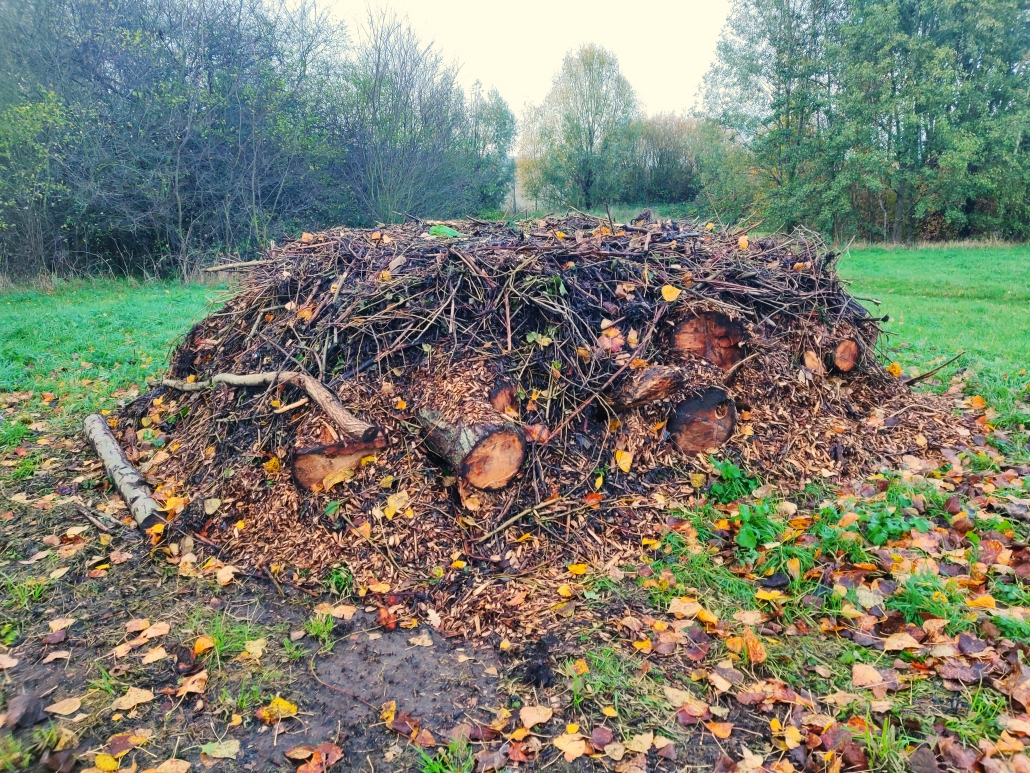
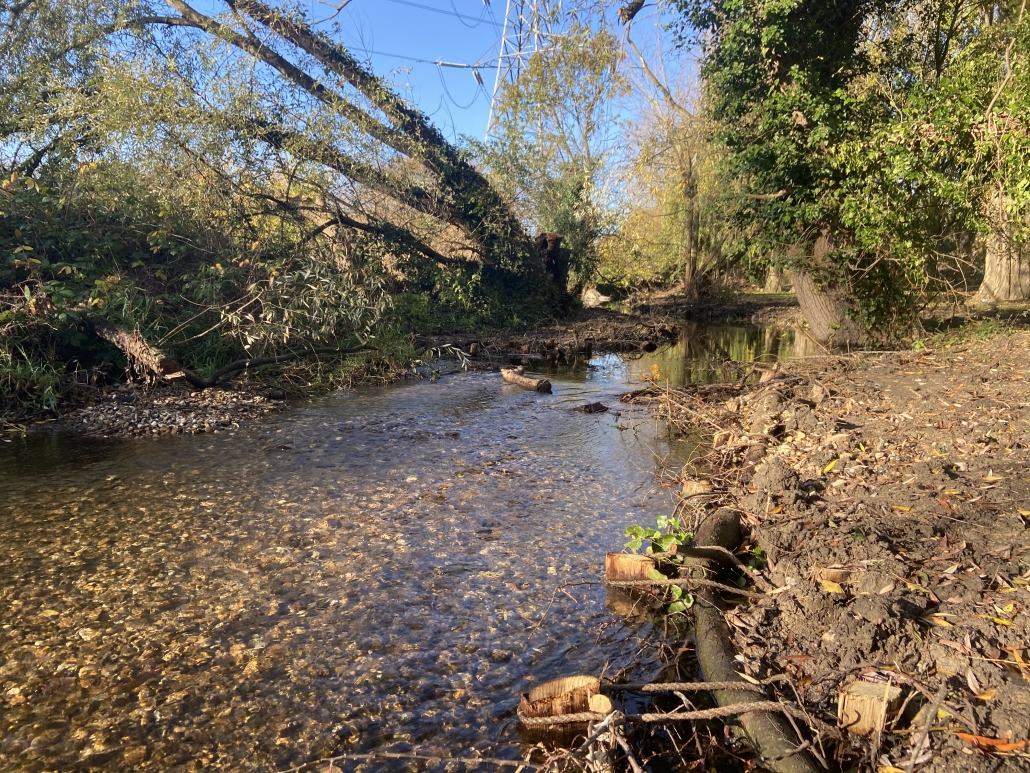
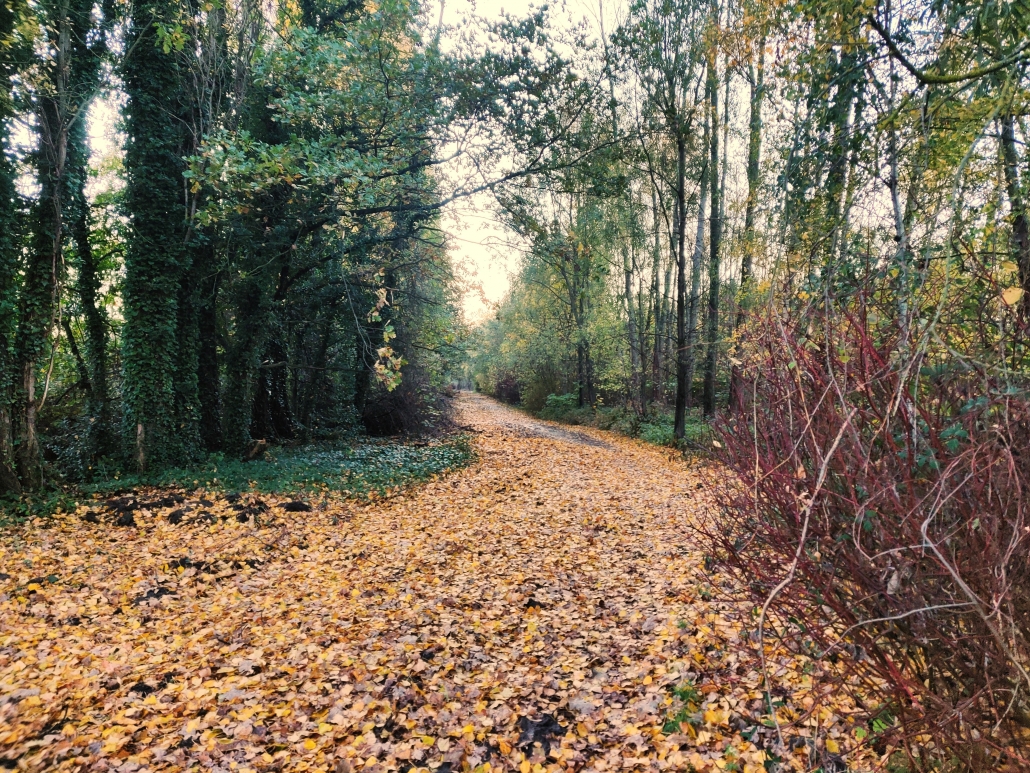



 Julia Dorans
Julia Dorans